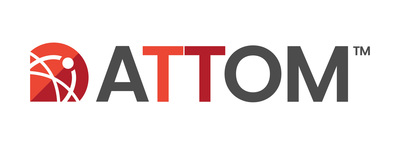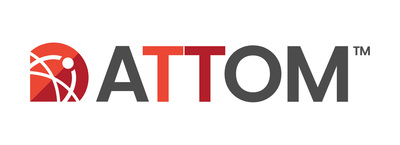
The median home sale generated a 49.9 percent, $123,100 profit in the third quarter;
Typical sales price hits $370,000
IRVINE, Calif., Oct. 16, 2025 /PRNewswire/ — ATTOM, a leading curator of land, property data, and real estate analytics, today released its third quarter 2025 U.S. Home Sales Report, which shows that homeowners made a 49.9 percent profit on typical single-family home and condo sales during the third quarter of the year. That was up slightly from the 49.3 percent profit margin posted in the previous quarter but still below the 55.4 percent typical profit sellers saw in the third quarter of 2024.
Prior to 2020, home sellers saw profit margins of around 30 percent. As the Covid-19 pandemic induced people in search of more space to leave cities and buy homes, profits doubled to more than 60 percent in mid-2022. The typical seller’s return has been dropping steadily since that peak, but over the last three quarters it’s held just below 50 percent.
Meanwhile, home prices have continued to rise. The median national sales price in the third quarter of 2025 was $370,000, up 1.2 percent from the previous quarter and 3.4 percent from the same time last year.
The typical home sales netted $123,100 in raw profit, up 1.9 percent from the previous quarter but down 3.5 percent from the third quarter of 2024, in a reminder that the market is slightly below its recent peak.
“Profit margins remained steady and high throughout the traditionally busier summer selling season,” said Rob Barber CEO of ATTOM. “While continuously rising prices could have chased away buyers and slackened demand, the recent dip in mortgage rates may be helping to keep more people in the market.”
Profit margins down in most metro areas, Florida sees biggest drops
Profit margins fell quarter-over-quarter in 58.6 (92) of the 157 large metro areas in ATTOM’s analysis and fell year-over-year in 84.1 (132) of those communities. The profit margin is the percent difference between the median purchase price and the median resale price for homes in a given area. Metro areas were included if they had at least 1,000 home sales in the third quarter of 2025 and sufficient data to analyze.
The metro areas with the biggest annual drops in profit margins were Ocala, FL (down from 103.9 percent to 55.1 percent); Punta Gorda, FL (down from 88.3 percent to 58 percent); Vallejo, CA (down from 66.4 percent to 43 percent); North Port-Sarasota, FL (down from 61.1 to 38.8 percent); and Port St. Lucie, FL (down from 77.8 percent to 56.1 percent)
The largest annual increases in home sale profit margins came in St. George, UT (up from 26.3 percent in the third quarter of 2024 to 37.2 percent in the third quarter of 2025); Gulfport, MS (up from 26.2 percent to 35.7 percent); Augusta, SC (up from 37.8 percent to 43.7 percent); Lexington, KY (up from 42.9 percent to 48.6 percent); and Dayton, OH (up from 55.1 percent to 60.7 percent).
Among metro areas with populations over 1 million, the biggest annual drops in typical home sales profit margins were in Tampa, FL (down from 70.7 percent to 54.3 percent); Seattle, WA (down from 93.6 percent to 80.2 percent); Fresno, CA (down from 70.9 percent to 57.7 percent); Boston, MA (down from 81.8 percent to 70 percent); and Jacksonville, FL (down from 56.7 percent to 45.2 percent).
Texas cities see lowest margins of major metro areas
Just over half (85) of the 157 metro areas in ATTOM’s analysis had typical home sale profit margins above 50 percent in the third quarter of 2025.
Among the metro areas with populations over 1 million, the largest typical home sale profit margins for the third quarter were in San Jose, CA (94.3 percent); Seattle, WA (80.2 percent); Buffalo, NY (80 percent); Rochester, NY (77.3 percent); and Hartford, CT (75 percent).
The lowest typical profit margins among the biggest metro areas came in New Orleans, LA (19.6 percent); San Antonio, TX (22.8 percent); Houston, TX (30 percent); Austin, TX (31.8 percent); and Dallas, TX (33.5 percent).
California sales rack up big dollar figures
Nationwide, the typical home sale generated a raw profit of $123,100 in the third quarter of 2025 but there were large disparities, with sales in the top major urban areas generating 18 times more in profit than those at the other end of the spectrum.
Among metro areas with populations over 1 million, the areas that saw the largest year-over-year growth in raw profits from sales were Birmingham, AL (up 21 percent); Honolulu, HI (up 13.4 percent); Indianapolis, IN (up 13.1 percent); Chicago, IL (up 13.1 percent); and Kansas City, MO (up 12.6 percent).
Of those largest metro areas, those with the largest annual drops in raw profits were Austin, TX (down 25.3 percent); Tampa, FL (down 17.7 percent); Jacksonville, FL (down 15.2 percent); New Orleans, LA (down 14.4 percent); and Houston, TX (down 13.4 percent).
In raw dollars, the metro areas with populations over 1 million that had the biggest typical profits were San Jose, CA ($740,500); San Francisco, CA ($450,000); San Diego, CA ($350,000); Los Angeles, CA ($349,500); and Seattle, WA ($325,000).
The major metros with the smallest raw profits were New Orleans, LA ($41,000); San Antonio, TX ($55,895); Oklahoma City, OK ($63,000); Birmingham, AL ($68,500); and Louisville, KY ($71,000).
Midwestern cities see biggest sales price increases
The national median home sales price hit $370,000, reaching a record high for the second consecutive quarter and up 3 percent from the same time last year.
Median sales prices rose year-over-year in 76.7 percent (122) of the 159 metro areas with sufficient data to analyze, while quarter-over-quarter prices were up in 55.3 percent of the metros.
The metro areas with the largest year-over-year increases in median sales prices were Birmingham, Al (up 23.5 percent); Detroit, MI (up 17.4 percent); Dayton, OH (up 14.8 percent); Flint, MI (up 12.9 percent); and Indianapolis, IN (up 12.8 percent).
The markets with the biggest annual drops in median sales prices were Cape Coral, FL (down 10.7 percent); Lake Havasu, AZ (down 8.6 percent); Austin, TX (down 8.2 percent); North Port-Sarasota, FL (down 7.4 percent); and Stockton, CA (down 7.3 percent).
Historical Median Home Sales Prices
Owners waiting ever-longer to sell
Owners had held homes sold in the third quarter of 2025 for an average of 8.39 years before selling them, the longest average homeownership tenure in at least 25 years and up from 8.13 years for homes sold in the previous quarter.
The metro areas with the longest average homeownership tenure—the time between purchase and sale—for homes sold in the third quarter were Barnstable, MA (14.4 years); San Francisco, CA (13.1 years); Santa Cruz, CA (13.1 years); Eureka, CA (13 years); and Bridgeport, CT (12.8 years).
The metro areas with the shortest average homeownership tenures were Provo, UT (6.9 years); Oklahoma City, OK (7.1 years); Austin, TX (7.3 years); Chattanooga, TN (7.35 years); and San Antonio, TX (7.4 years).
Average U.S. Homeownership Tenure
Sales by lenders make up a small share of the market
Homes sold by banks or other lenders accounted for 1.2 percent of all sales nationwide in the third quarter of 2025, marginally lower than the 1.3 percent share posted in the previous quarter and in the third quarter of 2025.
Among metro areas with sufficient data to analyze, the markets with the highest share of lender-owned sales were Beaumont, TX (4.1 percent of all sales); New Orleans, LA (3.6 percent); Baton Rouge, LA (3.2 percent) Honolulu, HI (3.2 percent of all sales); and Kansas City, MO (2.6 percent).
The areas with the smallest shares of lender-owned sales were Seattle, WA (0.5 percent of all sales); Los Angeles, CA (0.6 percent); Charlotte, NC (0.6 percent); Las Vegas, NV (0.6 percent); and Phoenix, AZ (0.6 percent.
All-cash sales continue to tick up
Nationwide, 38.9 percent of home sales were done through all-cash transactions, up from 37.6 percent at the same time last year.
Among metro areas with sufficient data to analyze for the third quarter of 2025, the markets with the highest rates of all-cash transactions as a percentage of total sales were Hilo, HI (69.9 percent); Claremont, NH (69.7 percent); Myrtle Beach, SC (67.4 percent); Honolulu, HI (64.7 percent); and Barnstable, MA (64.7 percent).
The markets with the lowest rates of all-cash transactions were Charleston, WV (18.9 percent); Kennewick, WA (22.9 percent); Washington, D.C. (23.1 percent); Vallejo, CA (23.2 percent); and Cedar Rapids, IA (25.6 percent).
Institutional investors pull back on purchases
Homes sold to institutional investors accounted for 6.4 percent of all sales nationwide, down from 7 percent in the previous quarter but a slight increase over 6.1 percent in the third quarter of last year.
The states with the highest proportion of sales to institutional investors were Texas (8.8 percent of all sales); Missouri (8.8 percent); Tennessee (8.7 percent); Indiana (8.4 percent); and Mississippi (8.4 percent).
California metros make most use of federal housing loans
In the third quarter of 2025, 8.3 percent of all home purchases were made using Federal Housing Administration (FHA) loans. That was up slightly from 8.2 percent at the same time last year, but down from 8.9 percent in the second quarter of 2025.
The metro areas with the highest proportion of sales involving FHA loans were Merced, CA (24.4 percent); Bakersfield, CA (23.4 percent); Yuma, AZ (22.1 percent); Visalia, CA (21.6 percent); and Modesto, CA (20 percent).
Conclusion
Overall, U.S. home sellers continued to see strong profits in the third quarter of 2025, with margins holding steady near 50 percent amid rising home prices. While gains remain below the peak levels reached during the pandemic, recent quarters suggest a more stable, sustainable market environment. Continued buyer demand, bolstered by moderating mortgage rates, may be helping to maintain solid returns for sellers across much of the country.
Report methodology
The ATTOM U.S. Home Sales Report provides percentages of REO sales and all sales that are sold to institutional investors and cash buyers, at the state and metropolitan statistical area. Data is also available at the county and zip code level, upon request. The data is derived from recorded sales deeds, foreclosure filings and loan data. Statistics for previous quarters are revised when each new report is issued as more deed data becomes available.
Definitions
All-cash purchase: sale where no loan is recorded at the time of sale and where ATTOM has coverage of loan data.
Homeownership tenure: for a given market and given quarter, the average time between the most recent sale date and the previous sale date, expressed in years.
Home seller price gains: the difference between the median sales price of homes in a given market in a given quarter and the median sales price of the previous sale of those same homes, expressed both in a dollar amount and as a percentage of the previous median sales price.
Institutional investor purchases: residential property sales to non-lending entities that purchased at least 10 properties in a calendar year.
REO sale: a sale of a property that occurs while the property is actively bank owned (REO).
About ATTOM
ATTOM
powers innovation across industries with premium property data and analytics covering 158 million U.S. properties—99% of the population. Our multi-sourced real estate data includes property tax, deed, mortgage, foreclosure, environmental risk, natural hazard, neighborhood and geospatial boundary information, all validated through a rigorous 20-step process and linked by a unique ATTOM ID.
From flexible delivery solutions—such as Property Data APIs, Bulk File Licenses, Cloud Delivery, Real Estate Market Trends—to AI-Ready datasets, ATTOM fuels smarter decision-making across industries including real estate, mortgage, insurance, government, and more.
Media Contact:
Megan Hunt
[email protected]
Data and Report Licensing:
[email protected]
View original content to download multimedia:https://www.prnewswire.com/news-releases/home-sales-profits-up-in-third-quarter-to-near-50-percent-margin-302586649.html
SOURCE ATTOM



